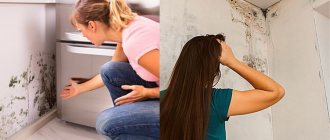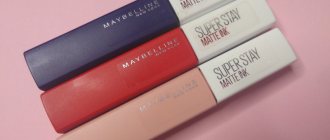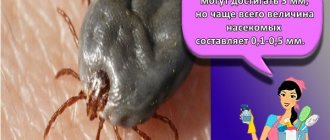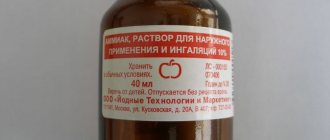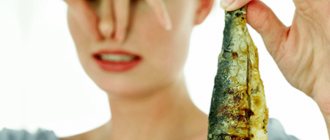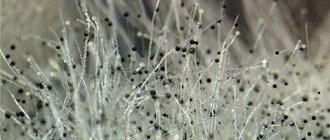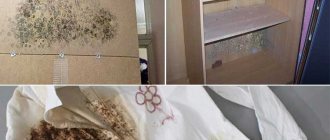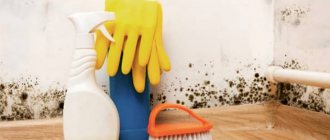There is only one reason for the appearance - dampness. This fungus spreads spores indoors, which, spreading through the air, provoke various diseases of the respiratory system.
How to remove mold? Getting rid of mold is not easy, but it is still possible with your own hands, without the involvement of specialists.
Traditional methods of struggle at home
Folk recipes involve the use of products that every housewife has.
How to remove with borax?
Being a natural antiseptic, borax destroys any pathogenic microorganisms, including mold.
To prepare the composition you need:
- 2.5 l. mix water with 1 glass of borax;
- the resulting composition is applied to the affected areas with a stiff brush;
- The applied product is not washed off.
Vinegar
Even if you use concentrated acetic acid, it is unlikely that you will be able to get rid of all types of mold. The advantage of this product is its naturalness and non-toxicity. It's completely harmless.
A spray or sponge is used to apply to the affected areas . Dilution with water is not required.
After applying the vinegar, it is recommended to leave it for an hour, then rinse with water and leave to dry. The rooms should be ventilated during this period, as vinegar has a rather pungent odor.
Vinegar can be used for prevention by treating the suspected affected areas with it once every 15 days.
Soda
Safe and harmless soda is the enemy of mold. If the area is severely affected, it can be used together with vinegar.
1 tablespoon of soda is poured into 250 ml. water, mix thoroughly and pour the resulting composition into a spray bottle.
The product is sprayed onto the affected areas and left for some time. Then, using a stiff sponge or brush, these areas are cleaned and rinsed with water.
After this, the soda solution is applied again, but now it is left until it is completely dry. You can put baking soda on a damp cloth and use it to wipe off the mold.
Hydrogen peroxide
The simple composition has an antibacterial and antifungal effect and copes excellently with mold. The main advantage is harmlessness.
Removes fungal infections from any surfaces:
- tiles,
- furniture,
- sanitary ware
Before using peroxide, you should conduct a test to make sure that there are no stains or streaks left on the surface to be treated.
To obtain the composition, 3% peroxide is sprayed onto moldy areas and left for a quarter of an hour. After this, the dirt is removed with a brush and the affected area is washed with water. To enhance the effect, peroxide is mixed with vinegar.
Ammonia
The product is toxic, but has excellent fungicidal properties.
The affected areas are treated with the mixture diluted with water in a 1:1 ratio. After an hour, these areas are washed with water.
You should not mix ammonia with bleach , as this results in the release of toxic gas.
Soap
Soap is not able to completely solve the fungal problem, so after using it, the area is treated with any antiseptic.
Easy to use:
- The infected areas are treated with a sponge soaped with laundry soap.
- After some time, the foam should be washed off.
Bleach
Any bleach is based on sodium hypochloride , which is the main enemy of mold. One time is enough to get rid of the entire fungal colony.
Bleach is diluted with water at a rate of 1:10 and applied to moldy areas with a spray bottle. The composition does not wash off!
Tea tree oil
An effective composition based on tea tree oil. If you don’t wash it off, then the fungus has no chance of coming back again.
The secret of the product is in special plant components that are destructive to microbes and fungi.
To prepare the composition, 1 teaspoon of the product is diluted in a glass of water . This composition is sprayed over the entire area with the fungus.
Don't be put off by the strong scent of tea tree oil. After a certain time it will disappear.
Potassium permangantsovka
Ordinary potassium permanganate is destructive for the fungus . For surface treatment:
- Prepare a solution of 1 liter of water and 1 teaspoon of potassium permanganate.
- This mixture is used to spray or wipe moldy areas.
- The solution does not need to be washed off.
Antiseptic primer
An effective remedy is antiseptic primer . Such compositions are sold ready-made. Using a roller or brush, the primer is distributed over the affected surface.
After applying the first coat, you must wait until it dries and then reapply.
When choosing a primer, the characteristics of the surface being treated must be taken into account. For example, different compositions are chosen for wooden and concrete walls.
When working with primer, you should follow safety precautions - use personal protective equipment :
- put on glasses
- respirator,
- gloves,
- headdress,
- special clothes.
What dangers does mold pose?
Some people are sensitive to mold and may experience symptoms such as nasal congestion, eye irritation, allergic reaction (itching, rash, redness), difficulty breathing. But people who are allergic to mold may have a serious reaction, including shortness of breath or fever. When kept in a poorly ventilated area, especially for a long period, mold can cause infectious diseases in the lungs, since spores during breathing enter primarily this organ. This is especially important for those who are suffering from (or have already had) respiratory infections.
When toothpaste is harmful to children: permissible age doses
A broken nail is no problem: tips for treating nails at home
The newlyweds traveled all over the world and took wedding photos in every country
Research has shown that exposure to mold can have detrimental effects on one's lifestyle. Thus, people suffering from asthma will experience a deterioration in their general condition, as well as an increase in coughing attacks and shortness of breath. During the work, scientists found that children are much more susceptible to respiratory diseases when they are in an infected room. In the future, chronic viral diseases can cause both bronchitis and asthma, because the respiratory system suffers first.
How to remove with chemical means?
Hardware stores offer a wide selection of mold removal products. Before purchasing this or that composition, it is advisable to read reviews about it .
Among the chemicals designed to get rid of mold, three stand out in particular.
Dali (Dali)
This is a universal domestic antiseptic composition designed to remove mold from any surfaces. Available at a price - 1 bottle of 0.6 l. costs between 150-200 rubles .
The product kills not only fungi and mold, but also moss and algae.
Due to the pungent toxic odor, you should work with this composition only with gloves and a respirator.
For the effect to be noticeable, more than one application will be required; you will have to treat it 2-3 times a week for 2-3 weeks . After using the composition according to the instructions, mold no longer appears.
Alpa (phonyfluid alpa)
A universal domestic product is aimed at destroying mold not only indoors, but also outside (an unheated basement can be treated). If used on a painted surface, then do not worry about the color.
Sold in 2 liter bottles, the price of one is 600 rubles . One bottle is enough to treat 10 square meters. meters.
If the composition is planned to be applied to a highly porous surface, then it is better to sand it first. This will ensure deeper and more uniform penetration of the active components.
Both a spray bottle and a simple sponge are suitable for application. Fongifluid can only be used at temperatures above 5 degrees.
After applying the composition, the mold self-destructs within a few days. After 7 days the treatment can be repeated .
Olympus Stop mold
The advantage of this product is its safety. Universal, can be used to treat any surface.
The composition applied to the surface is left for 2-3 days , after which it is wiped with a dry cloth. For maximum effect, this procedure is repeated immediately.
In rooms with high humidity, mold treatment should be done once every 3 months. To avoid health problems, processing work should only be carried out using a high-quality respirator.
Why does it multiply?
Due to the constant use of water in the shower room, humidity increases, which leads to the proliferation of spores. This phenomenon is more characteristic of apartments than houses. Because it is in multi-storey buildings that there is often poor ventilation.
Microscopic spores on the walls of the bathtub and tiles multiply very quickly, and the following conditions are the reason for their appearance:
- Humidity caused by lack of ventilation. Hot and cold water creates condensation, which remains on the tiles, walls, ceiling and other objects in the room. Without proper ventilation, excess moisture leads to the growth of small colonies of spores, which, when placed on a damp surface, begin to germinate and multiply.
- Poor plumbing can also contribute to the growth of spores. If the pipes coming from your sink, toilet or bathtub are dripping, standing water will quickly create a serious bacteria problem.
- Insufficient heating of the heated towel rail is another cause of the problem in question. In the bathroom, as in other rooms, if things are dried, then this must be done until they are completely dry. Slightly damp towels after drying are a great place for spore colonies to breed.
- Lack of indoor windows and natural light. Direct sunlight warms up the walls well and dries out the air. If there are no windows in the room, you will need to constantly open the doors or turn on the fan. Otherwise, the fungus will begin to multiply.
If a musty smell appears, you should immediately begin treating the room using antifungal and detergent folk remedies. Removing fungus from tiles and other surfaces is a difficult process, so be patient.
How can you get rid of the smell?
If, after destroying the mold, the corresponding smell remains, this can only mean that the fungus was not completely removed.
To eliminate unpleasant odors, you can use special chemicals (anti-mold impregnations, antiseptics). Folk remedies will also help.
Great for eliminating unpleasant odors:
- lemon juice or acid;
- vinegar;
- bleach;
- washing powder.
These products are used to moisten a cloth or sponge and wipe the problem areas.
The problem can be solved with the help of copper sulfate, but it is used only where it is not able to be absorbed. Essential oils, such as grapefruit or tea tree oil, are excellent at removing mold odors .
Find out more about mold odor control here.
Characteristics and composition
The oil is obtained from the leaves of the tea tree, which grows in Australia. The method of production is steam distillation . When using high-quality raw materials and following the technology, the result is a transparent light yellow or light olive fluid liquid with a spicy woody aroma.
If the aroma contains the smell of camphor, then the oil is not natural.
The composition of the oil is complex - it includes more than 95 components, about 50% of which are monoterpenes. It is they who give it valuable properties:
- bactericidal,
- anti-inflammatory,
- warming.
The main active ingredients are terpinen-4-ol and cineole. In order for the effect of the ether to be balanced and bring only benefits, the recommended content should be 40% and 5%, respectively.
In addition, the composition contains the substances viridifloren (up to 1%), B-terpineol (0.25%), L-ternineol and alligexanoate (in the form of traces), which are rarely found in nature. Viridofloren enhances the bactericidal effect of the oil.
The antibacterial effect is so high that it is used instead of carbolic acid and phenol to disinfect premises.
Features of removing fungus in different places in the house
Features of removing mold from various surfaces:
| Place | Removal Features |
| In a refrigerator | Mold can be eliminated using special detergents. This method requires careful treatment with water. But modern formulations contain abrasive components that can damage plastic. |
| From books | First, the book should be dried. Then the cotton napkin is moistened in a 2-3% formaldehyde solution (can be replaced with ammonia). Use a well-wrung cloth to wipe the affected areas. A clean sheet of paper is placed on the cleaned page to absorb excess moisture. Finally, the book is dried again. Sometimes you have to repeat this procedure. |
| From wooden surfaces, boards | Wood is a fibrous and porous material. The spreading spores eat deeper into the wood. If you do not quickly respond to the problem, then no mold treatment will help. Even minor lesions require serious work to eliminate it. The folk recipes described above will help in the initial stages. |
| On the balcony | In most cases, it is possible to solve the problem of mold on the balcony by establishing natural ventilation. To do this, holes are drilled in the double-glazed windows, or a small supply fan is installed. |
| In the washing machine | It is better to get rid of mold in a washing machine using available means: bleach or other products containing high concentrations of chlorine. |
| In the bathroom | The choice of remedy for mold in the bathroom depends on the severity of the damage. Small spots on the tile joints can be treated with ordinary table vinegar. In a poorly ventilated area, fungus will appear constantly. Read about removing mold on caulk here. |
| From the windows | Mold on windows forms due to high humidity. The solution to the problem lies in changing the microclimate of the room. You should check the external seal of the window frame and the quality of the installed slopes. If mold has already appeared, then it must be thoroughly cleaned and the area treated with an antifungal compound. |
| In the corners of an apartment, room | Mold in corners most often appears due to freezing of the seam. The solution to the problem lies in eliminating the freezing area and insulating it. For complete removal, you can use folk remedies, but before doing this you need to dry the room. |
| From drywall | Drywall is easily dismantled. If mold is found on surfaces made of this material, it is recommended to dismantle the slabs and replace them with similar ones. New slabs must be carefully treated with an antifungal compound. |
| From the dishes | The best way to remove mold from dishes is with ordinary baking soda. It will not only clean well, but also disinfect perfectly. |
| From upholstered furniture, fabrics and clothing | Upholstered furniture is treated with 6% hydrogen peroxide. For light-colored upholstery, you can use bleach or any other chlorine-containing compound. It is better to remove mold from fabric with table vinegar, furatsilin solution or fresh lemon juice. |
Read about ways to remove mold from wallpaper here, from walls - in this article, from the ceiling - here.
Wooden utensils
To eliminate the specific smell from the bread bin, you need to thoroughly wipe its walls with a clean cloth moistened with vinegar, and then ventilate the bread bin thoroughly.
Before first use, new wooden utensils should be soaked in water for 2-3 weeks, often changing the water, to remove tannins from the wood, which give an unpleasant odor to salted and fermented products.
Wooden utensils can be washed with all products recommended for washing dishes.
Do not dry washed wooden dishes and wooden cutting boards near a heat source: the wood may dry out and warp. It is better to dry in a ventilated place.
To make unpainted wooden utensils waterproof, after washing and drying the utensils, you need to lubricate its inner surface with a molten mixture of 70% rosin and 30% wax.
After washing, pour boiling water over the wooden cutting board. It is best to dry such a board in a closed cabinet; If you dry it on a wire rack, it is better to cover it with gauze on top.
Ways to remove the smell of onions and garlic from wooden (not painted inside) dishes and cutting boards: . - wipe with dry salt;
- pour boiling water over and wash with soap and water, and then rinse with cold water;
- pour boiling water over it and wipe with fine sand using a brush (move along the grain of the wood), and then rinse with cold water.
Prevention of occurrence
It is much easier to prevent a mold problem than to spend a long time trying to get rid of it. Among the most common preventive measures, several are worth noting:
An antimicrobial spray will help prevent fungal growths.
An alternative is to purchase anti-mold paint.- Shower curtains and towels should be carefully straightened after use.
- Problems with leaking plumbing should be addressed immediately. To prevent moisture from accumulating in cracks under the floor.
How is it harmful?
Not all types of branching mycelium are hazardous to health. The only dangerous fungi are those that produce volatile organic compounds (VOCs). Black mold is one of them. The VOCs it produces lead to the release of histamine in human immune cells, which can lead to lung diseases such as asthma.
This problem can become a real nightmare. Its exposure can lead to immediate or delayed reactions, so the true cause of a particular disease is not always immediately obvious.
Black mold in the bathroom provokes the following symptoms:
- dizziness;
- respiratory problems;
- flu symptoms;
- body pain and aches;
- skin rash;
- sinusitis;
- fungal infections;
- pulmonary ailments;
- depression;
- irritability;
- cough, etc.
If family members often get sick for no apparent reason, it is worth inspecting the bathroom and other rooms for microscopic spores.
Where else can you use oil?
Massage is one of the most popular ways to use essential oils. Massaging with a few drops helps the remaining oils to be absorbed more easily and have a beneficial effect on the skin. Try using a hot or cold compress. To do this, you need to wet the cloth and add a little oil to it. The towel is applied to the area for 10-15 minutes. This method is used to treat and eliminate muscle spasms, headaches and joint pain.
Try adding the oil (up to 10 drops) to a hot bath before taking it. You can also use the fragrant product in a foot bath to eliminate fatigue and pain after a hard day. It's no secret that essential oils help fight fungal infections, but they should be used along with other antiseptics.
“Olga” from the series of the same name: the tragic fate of actress Yana Troyanova
The star of the series “Sultan of My Heart” spoke about the choice of his future wife
25 children of a childless man: an extraordinary reunion
We are taking radical measures
If you have been struggling with blackness on the walls for a long time, but there is no positive result, you can call a cleaning company. Heavy mold removal specialists will do all the work for you and remove the mold quickly.
If you have black mold in your bathroom, how can you get rid of it forever? If professional treatment of the premises does not help, then radical destruction is necessary. In this case, you can deal with fungus in the bathroom only by making a good repair. You will need to replace tiles, wallpaper and ceiling tiles.
Cleaning pans and pots using glue and soda, why it works
Soda (sodium carbonate) is the sodium acid salt of carbonic acid. It quickly dissolves in liquid, creating an alkaline environment that breaks down fat and exhibits bactericidal and antiseptic properties.
Glue is a syrupy mixture of resins, plasticizers, hardeners, potassium or sodium silicates. The combination of these components softens water, increases acidity, which corrodes stubborn fats.
Professional chemicals market overview
If home remedies for mold in the bathroom did not help, and after treatment it reappeared, a more aggressive approach to the harmful scourge will be required. These may be antiseptics or antifungals.
How to deal with black mold in the bathroom:
- Copper sulfate. Copper sulfate in a volume of 100 g is diluted in 10 liters of warm water. To enhance the effectiveness of the solution, you can add 25–49 ml of vinegar. Apply the product using a sponge, brush or spray. If there is a lot of mold, you will need to repeat the procedure 3-5 times.
- Chlorine-containing products. How to remove mold: Apply bleach to the affected areas using a spray bottle. There is no need to dilute it; the solution must be concentrated. To remove the fungus you will need to carry out 2-3 procedures.
- Antiseptic. The antifungal can be used without first cleaning the source of infection. It perfectly fights microscopic fungus. A positive result will become noticeable half an hour after applying the Antifungal. After removing the spores, rinse off any remaining product with water.
- Mil Kill contains an antifungal substance. The product is safe for humans. It is applied undiluted with a sponge or brush.
Removing spores from seams
If mold appears in the bathroom, this does not mean that the tiles need to be replaced. This is a more radical way to remove fungus in the bathroom. If there is little dispute, you can simply clean the seams between the tiles.
To work, you will need a sharp object that matches the width of the seam. This could be a screwdriver, a knife, a wire brush, or sandpaper. You also need to prepare a rubber spatula, grout mixture and varnish with a brush.
How to remove fungus in the bathroom:
- First, remove the old layer of grout between the seams with a screwdriver, knife or wire brush. Black fungus may also be on an adjacent tile, but the colonies are still invisible, so it is better to increase the treatment area.
- Now you need to destroy the fungus with the prepared solution (store-bought or homemade). When treating tiles with a mold remover in the bathroom, be sure to wear gloves and a protective mask to avoid inhaling harmful fumes.
- After getting rid of mycelium colonies, dry the treated area with cold air using a regular or hair dryer. This will help break up any remaining disputes.
- Next, dilute the grout mixture and apply it to the seams using a rubber spatula.
Avoid using hot water as this will help the spores survive and continue to reproduce.
At the final stage, when the grout mixture has dried, the seam is varnished using a brush. This method not only helps remove black mold, but thanks to the varnish, the fungus does not have a suitable environment for existence, that is, this method prevents the further appearance of spores.

